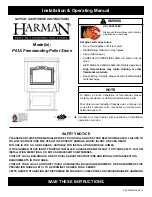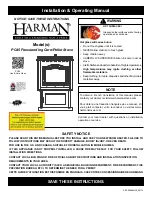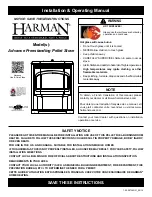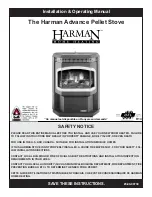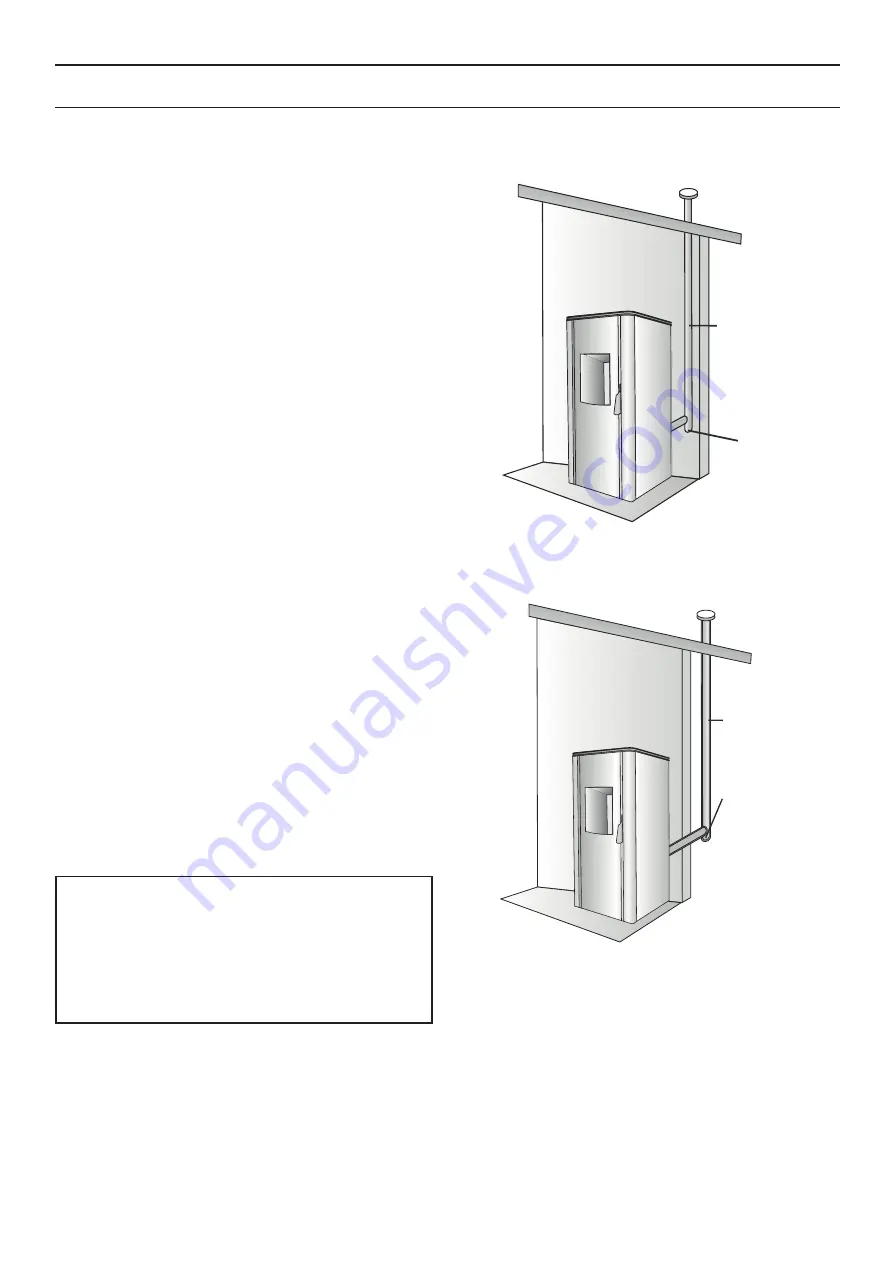
5
Flue gas exhaust
Combustion products must be exhausted
through the roof.
There must be one exhaust system for the stove
(there cannot be exhausts in a flue shared with
other devices).
Flue gas must be exhausted through a pipe
diameter 80mm placed at the back.
There must be a tee with a condensate collection
cap at the start of the upright section.
The stove flue gas exhaust must be connected to
the outside using steel or black pipes (resistant
to 450°C and beyond) without obstructions.
The pipe must be airtight. The pipes must be
sealed and insulated using materials resistant to
at least 300°C (high temperature silicon or putty).
The horizontal sections
can be up to 2m long
.
There can be up to three 90° elbows.
The vertical pipe can be inside or outside.
The smoke duct must be appropriately insulated.
If the smoke duct is inserted in a flue, this must
be authorised for solid fuels and if the diameter
is larger than 150 mm, it must be re-established
by piping and sealing the exhaust respect to the
part in masonry.
All sections of the flue gas pipe must be able to
be inspected. If fixed, it must have inspection
openings for cleaning.
According to the standard UNI 10683/05 and
subsequent amendments, the stove must
not be in the same room with extractor fans,
gas appliances or devices which can create a
vacuum in the room.
Installation
The adjacent room cannot be used as a
garage, storeroom for combustible material
or any activity involving fire hazard.
Fig.3: installation of indoor flue to be made according to
standards
Fig.4: installation of outdoor flue
Insulated
piping
Condensate
collection
cap
Insulated
piping
Condensate
collection
cap














